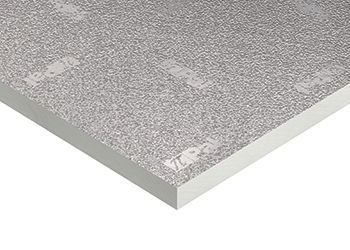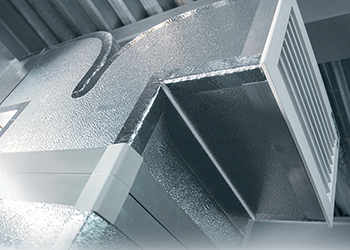Ozone-friendly systems vital
01 December 2016
SARMAD FAKHRI, managing director of Kingspan Insulation, stresses the need to avoid ozone depleting substances, in line with the region’s commitment to phase out these substances.
In 1987, 24 countries and the European Economic Community signed the Montreal Protocol. It is a protocol which aims to reduce and phase-out the use of ozone depleting substances (ODSs), such as CFCs (chlorofluorocarbons) and HCFCs (hydrochlorofluorocarbons).
This action followed the Vienna convention in 1985, which documented the depletion of the ozone layer and the harmful effects of the increased UV (ultraviolet) exposure that could result.
A thinner ozone layer can have grave effects on our lives; increased UV-B exposure can cause health problems, such as skin cancer. Furthermore, without the ozone layer, life would cease to exist. However, it is understood that it is our actions that have caused significant depletion of the ozone layer. As such, surely, it is now our responsibility to ensure that the ozone layer is kept in balance?
Article 5 parties
In 1989, Article 5 of the Montreal Protocol was developed, which allowed developing countries to become part of the action against ozone depletion. Recognising the need to balance the plight of the environment with the demands of industry, the Article 5 countries that signed up to the Protocol committed themselves to the phasing out of halons, CFCs and carbon tetrachloride by 2010. The UAE, Qatar and Oman all signed up to being considered Article 5 countries and, therefore, committed to phase out these ODSs.
CFCs, HFCs (hydrofluorocarbons) and HCFCs are well known in refrigeration and air-conditioning facilities. However, HCFCs, and previously CFCs, can also be used as a blowing agent during the manufacture of rigid insulation products. Blowing agents used in rigid insulation will have a different global warming potential (GWP) and ozone depletion potential (ODP).
 |
|
Fakhri ... green focus. |
It is important to understand that, whilst reducing energy consumption and carbon emissions of a building, thermal insulation and pre-insulated panels can impact on ozone depletion and climate change if they are not manufactured in a responsible way. Blowing agents, such as HCFCs, used in the manufacture of rigid insulation products can be released into the atmosphere and certain blowing agents that manufacturers are using can accelerate climate change and deplete the ozone layer.
HCFCs can have a relatively high ODP1– although significantly lower than CFCs. ODP is the ratio of relative amount of degradation to the ozone layer cause by a substance. The ODP of HCFCs is thought to be between 0.001 and 0.11. HCFC 141b, a blowing agent commonly used in the manufacture of insulation, has an ODP of 0.11, whilst other substances, such as pentane, have zero ODP whilst also offering a low GWP.
GWP is a relative measure of how much heat a greenhouse gas traps in the atmosphere; this is a separate issue to ozone depletion. The more heat the gas traps, the bigger the potential for global warming. For example, HCFCs have a GWP of up to 2,000 times that of carbon dioxide (CO2), and so, these substances are considered to have GWP. The European Parliament2 lists the GWP of each blowing agent that can be used during the manufacture of rigid insulation materials.
After the phase-out of CFCs, many rigid insulation manufacturers turned to HCFCs as an alternative as they have a much lower ODP than CFCs. However, following the 2007 amendment, the phase-out of these now interim chemicals, should really have already begun within Dubai, as per Dubai Municipality’s guidance document3 which enforces the phase-out.
Additionally, Estidama rating systems4 in Abu Dhabi provide guidance. Under the Stewarding Materials section, one credit point is available, providing all thermal insulation used has an ODP of zero and a GWP of less than five.
 |
|
PalDuct Hydro ... CFC/HFCFC free. |
However, despite this guidance, manufacturers are continuing to use HCFCs as blowing agents for rigid insulation. So, are HCFCs safe for the environment? From research, the short answer is no.
As such, specifiers in the UAE, Oman and Qatar, and in fact, all countries across the GCC need to be aware that specifying all types of rigid insulation should include not only CFC-free, but also HCFC-free products to ensure low GWP and zero ODP insulants.
Moving forward
Kingspan Insulation has been involved with engineering companies and leading insulation contractors on building services projects for more than 40 years, and has earned a reputation for consistently meeting and exceeding market requirements. Its range of Kingspan PalDuct pre-insulated ductwork systems now includes Kingspan PalDuct Hydro, a CFC/HCFC-free pre-insulated ductwork system with ODP of zero and a low GWP – an easy route to helping combat climate change and ozone depletion for specifiers, engineers and contractors.
References:
1. https://www.giz.de/expertise/downloads/Fachexpertise/giz2009-en-natural-foam-blowing-agents.pdf
2. “Regulation (EU) No. 517/2014 of the European Parliament and of the Council of 16 April 2014 on fluorinated greenhouse gases and repealing Regulation (EC) No 842/2006”
3. “Technical Guideline Number 7: Policy on the control of Ozone Depleting Substances”.
4. http://estidama.upc.gov.ae/pearl-rating-system-v10.aspx.
- Ozone-friendly systems vital
- Abu Dhabi quality mark for Kingspan Kooltherm range
- TSSC makes panels with Honeywell technology



